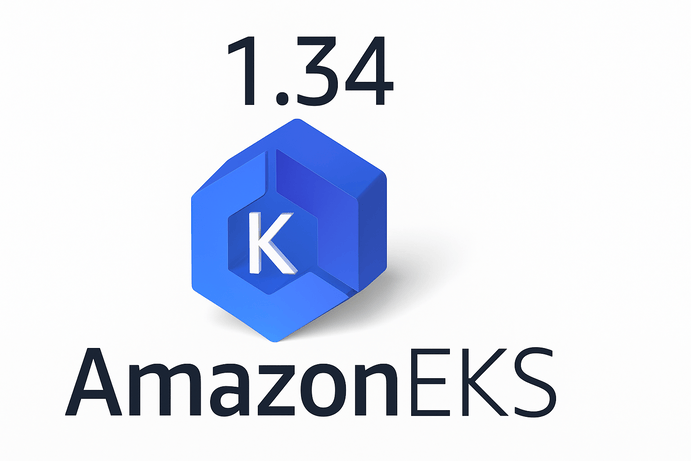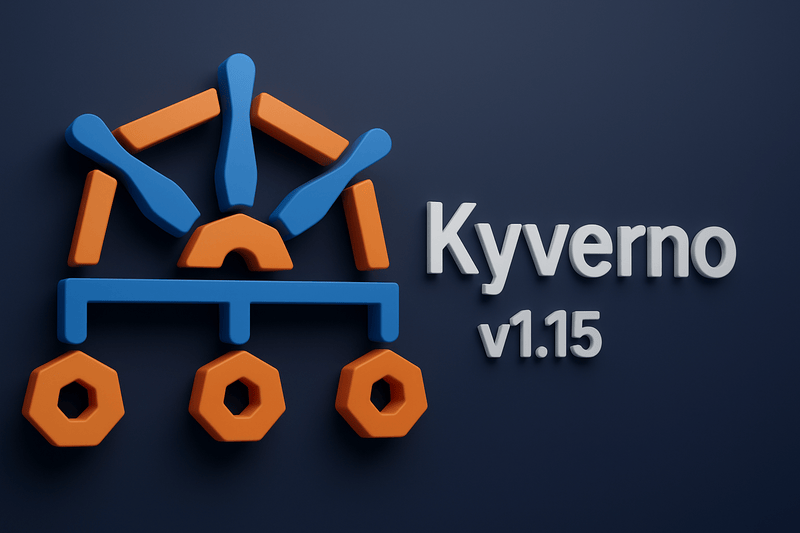When deploying microservices, one component that is not usually considered is operations between the services running in the cluster. Most times, applications running within a cluster are allowed to communicate without restrictions or guard rails. However, as applications scale managing the communication between services becomes increasingly complex. All the operations and systems considered for services exposed to the internet, should be the same consideration for services running within the cluster. Systems such as secured communication, traffic routing, throttling, circuit breaker, graceful deployments, and more. Adding these as part of the internal operations of microservices improves the resilience, security, and availability of the internal components running in the cluster. This concept is called service mesh.
A service mesh is a dedicated infrastructure layer that facilitates service-to-service communication, offering features like traffic management, security, and observability without requiring changes to the application code.
Core Components of a Service Mesh
A typical service mesh comprises two primary components: the data plane and the control plane.
- Data Plane: This is composed of a network of intelligent proxies, commonly deployed as sidecars alongside each service instance.These sidecar proxies intercept and manage all inbound and outbound traffic to and from their associated services, effectively handling communication tasks such as service discovery, load balancing, traffic routing, and secure inter-service communication.By offloading these responsibilities from the application code, sidecar proxies enable consistent implementation of policies like mutual TLS (mTLS) for encryption, authentication, and authorization across the mesh.They also contribute to system resilience by implementing features such as retries, timeouts, circuit breakers, and fault injection, which help maintain service availability during failures.Furthermore, sidecar proxies collect telemetry data, including metrics, logs, and traces, providing observability into service interactions and performance.This architecture allows for dynamic and centralized management of service communication, enhancing the security, reliability, and observability of microservices-based applications
- Control Plane: This serves as the central management layer, orchestrating the behavior of the data plane’s sidecar proxies.Operating out-of-band, it doesn’t handle network traffic directly but instead provides configurations and policies that dictate how proxies manage service-to-service communications.Through interfaces like APIs or CLIs, operators can define routing rules, security policies, and observability settings.The control plane integrates with systems such as Kubernetes for service discovery, ensuring that proxies are aware of the services within the mesh.It also handles certificate management, enabling features like mutual TLS for secure communications.By centralizing control, the control plane allows for dynamic updates and consistent policy enforcement across the service mesh, enhancing security, reliability, and observability in microservices environments.
Key Features and Functionalities
Service meshes offer a suite of features that enhance the reliability, security, and observability of microservices:
Traffic Management
Imagine you’re managing an online retail store, and you’ve developed a new feature that enhances the product recommendation engine. Instead of releasing this update to all users simultaneously—which could risk widespread issues if bugs are present—you opt for a gradual rollout. A service mesh facilitates this by allowing you to direct a small portion of user traffic, say 10%, to the new version while the remaining 90% continues to use the existing version. This approach, known as a canary deployment, enables you to monitor the new feature’s performance and stability in a real-world environment. If the new version performs well, you can incrementally increase its user base; if issues arise, you can quickly revert traffic to the stable version, minimizing impact.
Similarly, suppose you want to test two different layouts for your homepage to determine which one leads to higher user engagement. A service mesh allows you to implement A/B testing by routing different user segments to each version. For example, users from one geographic region could see layout A, while users from another region see layout B. By analyzing user interactions and engagement metrics, you can make informed decisions about which layout to adopt universally.
In both scenarios, the service mesh provides the necessary traffic management capabilities to implement these strategies effectively. It enables precise control over traffic distribution, supports dynamic routing based on various criteria (such as user location or device type), and allows for real-time adjustments without redeploying services. This level of control ensures that new features can be tested and deployed safely, enhancing the overall reliability and user experience of your application.
Security
In a microservices environment, ensuring secure communication between services is crucial. A service mesh addresses this need by implementing mutual TLS (mTLS), which encrypts traffic and verifies the identity of both the client and server services. This process involves each service presenting a digital certificate, confirming they are who they claim to be, thereby preventing unauthorized access and potential data breaches. For example, in a healthcare application, when a patient records service communicates with a billing service, mTLS ensures that both services are authenticated and that the sensitive data exchanged is encrypted, protecting patient confidentiality. This security measure operates transparently, without requiring changes to the application code, and is managed by the service mesh infrastructure, providing a robust and scalable solution for securing service-to-service communication.
Observability
For instance, you are running a bustling coffee shop with multiple stations: one for brewing, another for pastries, and a third for customer service. To ensure smooth operations, you need a system that monitors each station’s performance, identifies bottlenecks, and alerts you to any issues. Similarly, in a microservices architecture, a service mesh acts as this monitoring system, providing observability into the interactions between services.
A service mesh enhances observability by automatically collecting telemetry data—such as metrics, logs, and traces—through sidecar proxies deployed alongside each service. These proxies intercept all service-to-service communication, gathering data without requiring changes to the application code. For instance, metrics like request rates, error rates, and response times help you understand the health and performance of your services. If the error rate for the payment service spikes, the service mesh can alert you to investigate further.
Distributed tracing is another critical feature. It allows you to follow a user’s request as it traverses multiple services, pinpointing where delays or failures occur. For example, if a user experiences a delay when placing an order, tracing can reveal whether the issue lies in the inventory service, the payment gateway, or elsewhere.
Access logs provide detailed records of each request, including source and destination information. This data is invaluable for auditing purposes and for diagnosing issues at a granular level. By integrating with visualization tools like Grafana or Jaeger, the service mesh presents this telemetry data in dashboards, offering real-time insights into your system’s behavior.
In essence, a service mesh serves as the observability backbone of your microservices architecture, enabling proactive monitoring, rapid troubleshooting, and informed decision-making to maintain optimal system performance.
Resilience
Imagine you’re managing a bustling online marketplace, especially during peak shopping seasons like Black Friday. Suddenly, one of your critical services—say, the payment processing service—starts experiencing issues due to an unexpected surge in traffic. Without proper safeguards, this single point of failure could cascade, affecting the entire platform’s functionality. This is where a service mesh becomes invaluable in enhancing system resilience.
A service mesh introduces mechanisms like retries, timeouts, and circuit breakers to handle such scenarios gracefully. For instance, if a service call fails due to a transient network glitch, the service mesh can automatically retry the request, increasing the chances of a successful response without manual intervention. However, to prevent overwhelming a struggling service, these retries are intelligently managed using strategies like exponential backoff and retry budgets, ensuring that the system remains stable and responsive.
Timeouts are another critical feature. They define the maximum duration a service will wait for a response from another service. If the response isn’t received within this timeframe, the request is terminated, freeing up resources and preventing the system from hanging indefinitely. This is particularly useful when dealing with services that might become unresponsive under heavy load.
Circuit breakers act as protective barriers. When a service consistently fails or responds slowly, the circuit breaker trips, temporarily halting requests to that service. This pause allows the failing service to recover without being bombarded by new requests. Once the service shows signs of recovery, the circuit breaker allows a limited number of test requests to determine if it’s safe to resume normal operations.
Real-world applications have benefited from these features. For example, a major e-commerce platform implemented a service mesh to manage its microservices architecture. By leveraging circuit breakers, they prevented cascading failures during high-traffic events, ensuring that issues in one service didn’t bring down the entire system. Similarly, retries and timeouts helped maintain smooth operations by handling transient failures effectively.
In essence, a service mesh equips your system with the tools to anticipate, detect, and respond to failures proactively. By managing retries, enforcing timeouts, and implementing circuit breakers, it ensures that your services remain robust, responsive, and resilient, even under challenging conditions.
Real-World Use Cases
- E-commerce Platforms: In complex applications like online marketplaces, service meshes manage the intricate web of microservices handling inventory, payments, and user interactions. They ensure secure transactions, efficient traffic routing, and real-time monitoring, enhancing the overall user experience.
- Financial Services: Companies like PayPal utilize service meshes to maintain high availability and performance. By leveraging features like load balancing and automatic retries, they ensure reliable transaction processing and minimize downtime.
- Large-Scale Enterprises: Organizations with extensive microservices architectures, such as Amazon, employ service meshes to streamline service discovery, enforce security policies, and gain visibility into service interactions, thereby improving operational efficiency.
Service Mesh Implementation
Open-Source Service Mesh Implementations
- Istio is one of the most feature-rich and widely adopted service meshes in the Kubernetes ecosystem. It offers advanced traffic management, security, and observability features. Istio integrates seamlessly with Kubernetes and supports a range of deployment scenarios. Its architecture is based on Envoy proxies deployed as sidecars, managed by a robust control plane.
- Linkerd is known for its simplicity and performance. It was the first service mesh project and has evolved to focus on lightweight, easy-to-use features. Linkerd uses its lightweight proxy and is deeply integrated with Kubernetes, making it a great choice for those seeking a straightforward service mesh solution.
- Consul Connect, developed by HashiCorp, Consul Connect extends Consul’s service discovery capabilities to include service mesh features. It supports both Kubernetes and non-Kubernetes environments, making it versatile for hybrid infrastructures. Consul Connect uses Envoy proxies and offers features like mTLS encryption and service segmentation.
- Kuma, created by Kong, is a universal service mesh that supports both Kubernetes and traditional VM-based environments. It provides a simple control plane and leverages Envoy for its data plane. Kuma is designed for multi-zone and multi-cloud deployments, offering flexibility and scalability.
Proprietary Service Mesh Solutions
- AWS App Mesh is a managed service mesh offering from Amazon Web Services. It integrates with other AWS services and provides features like traffic routing, observability, and security for microservices running on AWS. App Mesh uses Envoy proxies and is designed to work seamlessly with services deployed on Amazon ECS, EKS, and EC2.
- Azure Service Fabric is Microsoft’s platform for building and managing microservices applications. It provides comprehensive lifecycle management, including deployment, scaling, and monitoring. Service Fabric supports both stateless and stateful microservices and is designed for high availability and scalability in Azure environments.
Advantages and Disadvantages of a Service Mesh
Advantages of a Service Mesh
- Service meshes provide built-in observability tools, including metrics collection, distributed tracing, and logging. This comprehensive visibility into service interactions aids in performance monitoring and troubleshooting.
- By implementing mutual TLS (mTLS), service meshes ensure encrypted communication between services, authenticate service identities, and enforce access control policies. This centralized security model simplifies compliance and reduces the risk of data breaches.
- Service meshes enable sophisticated traffic routing strategies, such as canary deployments and A/B testing. They also offer resilience features like retries, timeouts, and circuit breakers, enhancing the system’s ability to handle failures gracefully.
- By abstracting communication logic into a dedicated infrastructure layer, service meshes promote consistency across services, regardless of the programming languages or frameworks used. This uniformity simplifies operations and maintenance.
- Service meshes facilitate the management of large-scale microservices deployments by automating service discovery, load balancing, and configuration management, thereby supporting scalability and agility.
Disadvantages of a Service Mesh
- Integrating a service mesh adds layer to the system architecture, which can complicate deployment and management. Teams must invest time in understanding and maintaining this new layer.
- The introduction of sidecar proxies for managing service communication can lead to increased latency and resource consumption, potentially impacting application performance.
- Adopting a service mesh requires teams to acquire new skills and knowledge, which can be a barrier, especially for organizations with limited resources or expertise in distributed systems.
- Managing the control plane and ensuring the health of numerous sidecar proxies across services can increase operational workload, necessitating robust monitoring and automation tools.
- Some service mesh solutions are tightly integrated with specific platforms or cloud providers, which can limit flexibility and portability. Organizations should carefully evaluate the implications of adopting such solutions.
When do you need a Service Mesh?
1. When Managing Complex Microservices Architectures
As applications grow and adopt a microservices architecture, the number of services and their interactions increase exponentially. Managing communication, security, and observability across these services becomes challenging. A service mesh provides a dedicated infrastructure layer to handle service-to-service communication, offering features like load balancing, service discovery, and traffic routing, thereby simplifying the management of complex microservices environments.
2. To Enhance Security and Compliance
In environments where security and compliance are paramount, a service mesh offers robust features such as mutual TLS (mTLS) for encrypted communication between services, fine-grained access control policies, and secure service-to-service authentication. These capabilities help organizations meet stringent security requirements and maintain compliance with industry standards.
3. To Improve Observability and Monitoring
Gaining insights into the behavior of microservices is crucial for maintaining application health and performance. A service mesh provides built-in observability tools, including metrics collection, distributed tracing, and logging, without requiring changes to application code. This centralized observability facilitates quicker debugging and performance optimization.
4. To Facilitate Application Modernization
Organizations modernizing legacy applications often face challenges in integrating new microservices with existing systems. A service mesh can abstract the complexities of communication between old and new components, enabling a smoother transition and coexistence during the modernization process.
5. To Support Multi-Cluster and Multi-Cloud Deployments
Deploying applications across multiple clusters or cloud providers introduces networking complexities. A service mesh can unify service discovery, traffic management, and security policies across diverse environments, providing a consistent operational model and simplifying cross-cluster or multi-cloud deployments.
6. It Enables Advanced Traffic Management
Implementing deployment strategies like canary releases, blue-green deployments, or A/B testing requires sophisticated traffic routing capabilities. A service mesh allows for fine-grained control over traffic distribution, enabling these advanced deployment patterns without significant changes to application code.
7. For Reducing Developer Burden
By offloading responsibilities such as service discovery, load balancing, retries, and circuit breaking to the service mesh, developers can focus more on business logic rather than infrastructure concerns. This separation of concerns accelerates development cycles and improves code maintainability.
Conclusion
In summary, service meshes play a pivotal role in modern Kubernetes environments by simplifying service communication, enhancing security, and providing valuable insights into system performance. Their adoption leads to more resilient, secure, and manageable microservices architectures.







